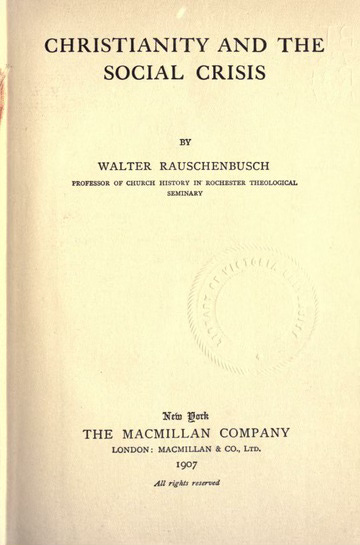Is The Pledge Patriotic?
Patriotism in a free United States of America requires much more than mere rote recitation of allegiance.
I was born and raised in the small rural town of Hays, Kansas. I mention this because Hays has become important in the history of the Pledge of Allegiance, and this essay is about the Pledge.
Academic Consensus
For more than a hundred years, the history of the Pledge of Allegiance seemed settled. According to credible sources such as the Smithsonian Institution, the Congressional Research Service, the Library of Congress, and The Yale Book of Quotations, the Pledge was composed in August 1892 by Francis Bellamy, a socialist Baptist minister in New York who aimed to promote a sense of patriotism among American schoolchildren by inspiring them to become future socialists.
Bellamy's original version was published in the children's magazine for which he worked as a journalist, The Youth’s Companion, in September 1892: I pledge allegiance to my Flag and the Republic for which it stands, one nation indivisible, with liberty and justice for all.
His Pledge was then introduced a month later as part of a nationwide celebration of the 400th anniversary of Christopher Columbus’s arrival in the New World, during which millions of schoolchildren across the United States recited Bellamy’s Pledge to the Flag.

These celebrations coincided with the dedication of the World's Columbian Exposition in Chicago on October 21, 1892 (the World’s Fair in Chicago would open to the public the following May).
In 1942, United States President Franklin Roosevelt and the New Deal Democrats in Congress cheerfully and officially recognized the Pledge by including it in the U.S. Flag Code. Over the years, minor changes were made, including changing the title to "Pledge of Allegiance." In 1954, the words "under God" were added, prompted by the heightened tensions of the Cold War and a desire to distinguish America from atheistic communism.
The current version of the Pledge of Allegiance reads: I pledge allegiance to the Flag of the United States of America, and to the Republic for which it stands, one Nation under God, indivisible, with liberty and justice for all.
Timeline
The timeline, then, according to historians, runs as follows:
August 1892: Francis Bellamy wrote the Pledge.
September 1892: Bellamy’s Pledge was published in The Youth’s Companion magazine.
October 1892: For the first time, children in U.S. schools recited Bellamy’s Pledge aloud.
But there’s a catch. Remember Hays?
Recently discovered, an article appeared in the May 21, 1892, issue of a newspaper published in Hays, Kansas, describing a school ceremony that had taken place several weeks earlier—in April 1892—during which Kansas schoolchildren recited a pledge to the United States Flag.
That pledge was virtually identical to the one Francis Bellamy claimed to have written in August 1892. The only difference was that the pledge recited by Kansas schoolchildren in April included the word "inseparable" instead of Bellamy’s "indivisible." Otherwise, the two pledges were identical.
The Kansas Pledge had been submitted by a 13-year-old boy as part of a contest sponsored by The Youth’s Companion, the same magazine that employed Francis Bellamy as a writer. The story gets even stranger: The young boy in Kansas who submitted the draft pledge for the magazine contest was named—wait for it—Frank Bellamy.
Perhaps some budding doctoral student studying history will uncover the truth and clarify who actually wrote the Pledge of Allegiance. As of now, however, the authorship of the Pledge remains what scholastics once referred to as a disputed question.
Where Credit Is Not Due
The Hays newspaper article from May 1892 does not definitively prove that the Kansas teenager, Frank Bellamy, actually authored the Pledge. It strongly suggests, however, that the New York socialist minister, Francis Bellamy, did not.
It is certainly possible that the teenage Frank Bellamy from Kansas saw a contest for a new pledge to the U.S. flag in the pages of The Youth’s Companion, wrote a couple of lines, and submitted his draft pledge by mail to the magazine.
It is also possible that while waiting for a response from the magazine’s staff, the boy’s teacher decided to use the pledge he had written for an in-school flag ceremony, which was featured in the May 1892 Kansas newspaper article.
Furthermore, it is plausible that the pledge written by young Bellamy from Kansas was read by the New York socialist minister Francis Bellamy—who was working at The Youth’s Companion—and likely would have noticed the same last name—and the socialist minister then claimed credit for the pledge as his own, possibly assuming that no teenager from rural Kansas would be able to correct the historical record.
(Part of me wants to crack a joke about a socialist claiming credit for something he didn’t actually produce, but that’s not scholarly, so I won’t do it here.)
Socialism
As I have explained, the intellectual, cultural, and political movement that emerged as progressivism in the United States in the 1870s, 1880, and 1890s, originated in 19th-century German thought. The European social sciences that would later fuel Nazi fascism in Germany inspired progressivism in America. The various forms of collectivism—including communism, fascism, and socialism—formed the wellspring of ideas from which American progressive thinkers borrowed heavily.
Francis Bellamy was merely one of many influential progressive individuals in the United States during the turn of the 20th century who became enamored with socialism.
Progressive politicians, intellectuals, and Christian preachers were confident that socialist economic central planning coupled with progressive social engineering would create a future where virtually all human problems became relics from a pre-progressive, pre-socialist era. They believed that crime, poverty, disease, mental health issues, and even war would be permanently resolved through progressive socialism.
The socialist sermons and literature produced by progressive preachers became known as the Social Gospel movement. Like Francis Bellamy, Walter Rauschenbusch (also a New Yorker) was a socialist pastor who taught, spoke, and wrote at the same time Bellamy did. In his influential 1907 book, Christianity and the Social Crisis, Rauschenbusch explained that what is most important in a modern, industrialized nation like the United States is “the [public] control of these factors of production” (Chapter V, p. 231).
If that sounds similar to Karl Marx's call for the proletariat to seize control of the means of production, that’s because it is. Rauschenbusch’s entire book is a Marxist call to action, directed at Christians, and framed by Christian and Biblical references.
The optimism of American-style socialism that emerged after the Civil War is important for understanding Francis Bellamy’s almost religious enthusiasm for the Pledge of Allegiance.
While questions have arisen about whether the socialist minister from New York actually wrote the Pledge, there is no doubt he promoted it as widely as possible. Francis Bellamy’s commitment to socialism and to the Pledge were two sides of the same coin.
Nationalism and Collectivism
For Bellamy, his socialist ideals emphasized the importance of collective responsibility and unity, evident in the Pledge’s framing of the nation as “one nation indivisible.” The wording of the Pledge served Bellamy’s socialist agenda well: it was vague enough to align with socialist ideals while not being openly or blatantly socialist.
The salute that accompanied the Pledge, however, was quite overt.
The original gesture accompanying the Pledge was an outstretched arm, palm down, famously referred to as the “Bellamy salute.” This gesture became a source of public controversy in the 1930s because it was identical to the salute Nazis used to honor Hitler. In 1942, the United States Congress changed the salute from the Nazi-like outstretched arm to the right hand placed over the heart.

The adoption of a salute that represented totalitarian tyranny, nationalistic fanaticism, collectivist socialism, and unchecked fascist government power in Nazi Germany should cause liberty-loving Americans to pause and reconsider the purposes of the Pledge.
Economic Equality
The phrase “with liberty and justice for all” hints at the notion of “social justice” that Bellamy believed to be at the heart of socialism. Unlike the classical virtue of justice, which is exercised by individuals, “social justice” implies a kind of economic equality or sameness imposed on an entire national population, usually by the government.
Public Education
Virtually all 19th-century socialists, including Francis Bellamy, advocated for public education. They pushed the agenda of “universal education,” using tax dollars to fund public schools managed by government bureaucrats that would educate and indoctrinate the next generation in the “benefits” and “morality” of socialism.
Whether or not Bellamy wrote the Pledge, he promoted the Pledge because it provided a means to spread the ethos of socialism within schools. Like many socialists, Bellamy understood that the most effective method of conversion is to reach and attract individuals when they are young.
Rejection of Individualism
Bellamy’s socialism prioritized social well-being over individual freedom, property, prosperity, and happiness, which is reflected in the communal tone of the Pledge he promoted. The allegiance was not pledged to a set of timeless principles regarding individual liberty and natural rights; rather, Bellamy aimed for young Americans to pledge their allegiance—daily and in school—to the republic as a whole, which in practice means allegiance to the government.
No Pledge for the Founders
There is an important reason why the American Founders had no “pledge of allegiance,” especially to a government: they scrapped two governments before creating a third, all within a single generation.
First, the American revolutionaries threw off the yoke of the British government. They would no longer be ruled by the King and Parliament. When the British government was willing to send troops, revolutionary Americans were willing to shoot them with their privately-owned weapons of war.
Far from pledging allegiance to any government, the Americans, in their Declaration of Independence, explicitly and “solemnly” declared that they were “absolved from all allegiance to the British Crown.”
Let that sink in: The United States of America was founded not by an act of allegiance, but by a defiant rejection of allegiance—allegiance that was enforced by English law through the principle of natural-born subjectship to the King.
Next, the Americans wisely recognized the need to create a government to replace the one they had just overthrown, but they were not wise enough to establish good government. Instead, they adopted their first constitution, the Articles of Confederation, which resulted in a government inept at protecting the individual rights of citizens.
The Founding generation of Americans did not view themselves as bound by allegiance to that government, either. They abolished the government of the Articles of Confederation when they ratified their second constitution—the United States Constitution of 1787—thereby creating yet another government.
According to the Declaration of Independence, the purpose of any morally legitimate government is “to secure these rights,” referring to the unalienable individual natural rights of life, liberty, property, and the pursuit of happiness. Does anyone doubt that if the government established by the Constitution had failed in that purpose—if it violated rather than protected individual rights—the Founding generation of Americans would have abolished that government, too, and tried again?
Bellamy’s Pledge
Whether it was written by the old socialist Christian preacher Francis Bellamy or the teenage Kansan Frank Bellamy, the Pledge of Allegiance now enshrined in law requires citizens to pledge allegiance not only “to the Flag of the United States of America” but also—and perhaps more importantly—“to the republic for which it stands.”
The flag serves as a symbol, while the republic represents the literal, actual regime represented by the flag. Of course, the Pledge does not define what a “republic” is. Socialists and communists often refer to their own tyrannical regimes as “republics.” Is China a republic simply because its official legal name is the People’s Republic of China?

Here in the United States, how many Americans today, who proudly stand with their hand over their heart (rather than with an outstretched arm, palm down) and recite the Pledge of Allegiance like a rote medieval incantation, violate the basic tenets of republicanism?
How many Americans are intoxicated by democracy? Every day we hear how important it is to “save our democracy!” How many U.S. citizens assume that a majority vote makes any action or policy right and just? How many believe that the purpose of government is to carry out the will of the majority, even if the majority wants to do unjust things rather than protecting the individual rights of fellow citizens?
We now have a Congress that, by majority vote, passes all kinds of constitutionally and morally illegitimate laws. Members of Congress, usually with the approval of a sitting President, create grossly unjust spending programs that are wasteful, inefficient, ineffective, and blatantly unconstitutional, while incentivizing irresponsibility, idleness, and crony corruption.
Does a majority vote make those wrongs right?
I mentioned at the beginning of this essay that I was born in Hays, Kansas. I no longer live there; I now reside in Denver, Colorado, where a majority of voters are progressives. They’ve embraced the socialism Francis Bellamy preached. He would be proud of how “progressive” Denver has become, with entire neighborhoods filled with homeless people, rising rates of crime, addiction, and dependency, and politically-connected cronies getting rich from government largesse.
Oh, how progressive we are in Denver! Oh, how democratic we are!
With a voting majority now dependent on government support in one form or another, there is no government spending program—regardless of its label or alleged purpose—that is voted down in Denver County. Every tax increase and every new spending program enjoys enthusiastic support from socialist progressive voters in the style of Bellamy. Property rights mean virtually nothing in Denver.
Is that the “democracy” we should “save?”
In The Federalist Papers #10, James Madison—one of the primary architects of the United States Constitution—lamented that “a pure democracy, by which I mean a society consisting of a small number of citizens who assemble and administer the government in person, can admit of no cure for the mischiefs” of unjust mob rule.
He went on to explain that “a republic, by which I mean a government in which the scheme of representation takes place, opens a different prospect and promises the cure for which we are seeking.”
The difficulty of a republic, however, is that a voting majority does not always get what they want, because a wisely designed constitutional republic recognizes that the will of the majority is not synonymous with what is right or just. The whole purpose of the Constitution is to make it difficult for a democratic majority to violate the rights or confiscate the property of the minority. Unruly and unjust majority mobs—who have unjust desires and unconstitutional purposes—grow impatient with the processes of a constitutional republic. They can sometimes be heard saying among themselves: “Damn this republic! We want democracy!”
Patriotism, American-Style
The true meaning of patriotism, in a self-governing constitutional republic dedicated to the proposition that all men are created equal—borrowing from Lincoln’s remarks at Gettysburg—and committed to the self-evident truths of the Declaration of Independence, goes far deeper than any rote pledge.
Patriotism in a free United States of America requires something much more challenging than merely repeating an invocation or a promise. It demands that we study and understand the timeless principles of individual liberty and human flourishing.
It requires the prudent application of those principles to the challenges and changing situations of our day. It means holding ourselves, our fellow citizens, and our government accountable to those principles.
If patriotism in a regime of liberty means anything at all, it means free people assertively telling their own government: “Don’t Tread On Me!” People who are patriotic and free—in a regime of liberty—are willing to throw off the shackles of an unjust government, or two, or three, until they can create a just and good government that fosters the conditions for freedom and protects the life, liberty, property, and the pursuit of happiness of each and every citizen.
The patriotism of liberty is not blind allegiance to a government or a flag that represents that government. The patriotism of liberty is intelligent allegiance to the principles and practices of liberty.








